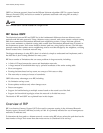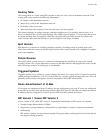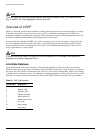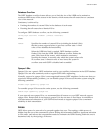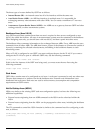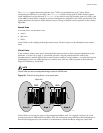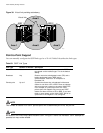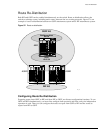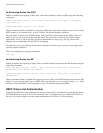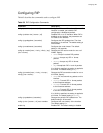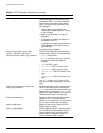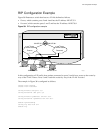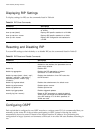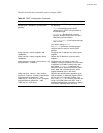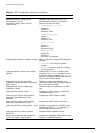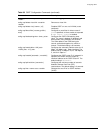
216 Summit 200 Series Switch Installation and User Guide
Interior Gateway Routing Protocols
Re-Distributing Routes into OSPF
Enable or disable the exporting of RIP, static, and direct (interface) routes to OSPF using the following
commands:
enable ospf export [static | rip | direct] [cost <metric> [ase-type-1 | ase-type-2]
{tag <number>}]
disable ospf export [static | rip | direct]
These commands enable or disable the exporting of RIP, static, and direct routes by way of LSA to other
OSPF routers as AS-external type 1 or type 2 routes. The default setting is disabled.
The cost metric is inserted for all RIP-learned, static, and direct routes injected into OSPF. If the cost
metric is set to 0, the cost is inserted from the route. The tag value is used only by special routing
applications. Use 0 if you do not have specific requirements for using a tag. The tag value in this
instance has no relationship with 802.1Q VLAN tagging.
The same cost, cost-type, and tag values can be inserted for all the export routes, or route maps can be
sued for selective insertion.
Verify the configuration using the command:
show ospf
Re-Distributing Routes into RIP
Enable or disable the exporting of static, direct, and OSPF-learned routes into the RIP domain using the
following commands:
enable rip export [static | direct | ospf | ospf-intra | ospf-inter | ospf-extern1 |
ospf-extern2] cost <metric> tag <number>
disable rip export [static | direct | ospf | ospf-intra | ospf-inter | ospf-extern1 |
ospf-extern2]
These commands enable or disable the exporting of static, direct, and OSPF-learned routes into the RIP
domain. You can choose which types of OSPF routes are injected, or you can simply choose
ospf, which
will inject all learned OSPF routes regardless of type. The default setting is disabled.
OSPF Timers and Authentication
Configuring OSPF timers and authentication on a per-area basis is a shorthand for applying the timers
and authentication to each VLAN in the area at the time of configuration. If you add more VLANs to
the area, you must configure the timers and authentication for the new VLANs explicitly.



